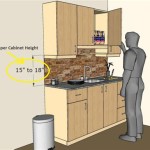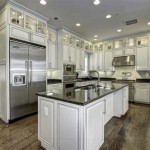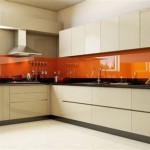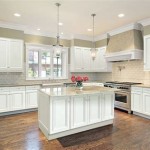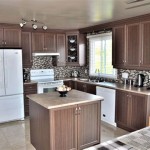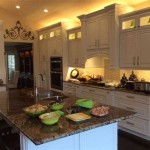Can You Change Doors On Kitchen Cabinets? A Comprehensive Guide
Kitchen cabinets, the silent workhorses of a home, often dictate the overall aesthetic and functionality of the space. Over time, even well-maintained cabinets can begin to show their age. Faded finishes, outdated styles, and general wear and tear can diminish the appeal of an otherwise functional kitchen. Rather than undertaking a full-scale kitchen renovation, which can be a costly and disruptive process, many homeowners consider a more targeted approach: replacing just the cabinet doors. This article explores the possibility of changing doors on kitchen cabinets, delving into the factors influencing this decision, the process involved, and the potential benefits and drawbacks.
The core question of whether cabinet doors can be replaced is generally affirmative, provided certain conditions are met. Cabinet boxes, the structural frames of the cabinets, often remain in good condition long after the doors exhibit signs of aging. If the cabinet boxes are structurally sound, square, and free from significant damage or warping, replacing the doors becomes a viable option. This approach can significantly transform the look and feel of a kitchen without the extensive labor and expense associated with a complete cabinet replacement.
Assessing the Condition of Your Existing Cabinets
Before embarking on a cabinet door replacement project, a thorough assessment of the existing cabinets is crucial. This evaluation should focus on the structural integrity of the cabinet boxes, the condition of the hinges and hardware, and the overall layout of the kitchen. Any significant structural issues with the cabinet boxes, such as warping, water damage, or insect infestation, may necessitate a more comprehensive solution than simply replacing the doors.
The integrity of the cabinet boxes is paramount. Inspect each box for signs of damage, paying close attention to the corners, joints, and bottom panels. Check for any signs of water damage, which can appear as swelling, discoloration, or mold growth. Also, examine the cabinet boxes for squareness. If the boxes are significantly out of square, the new doors may not fit properly, leading to alignment issues and functional problems. In cases of extensive damage, reinforcing or replacing the cabinet boxes might be necessary before proceeding with door replacement.
The hinges and hardware also deserve careful attention. While these components are often replaced concurrently with the doors, their condition can provide insights into the overall health of the cabinets. Check for loose, stripped, or rusted hinges. If the existing hinges are in poor condition, it is advisable to replace them with new, high-quality hinges that are compatible with the new doors. Consider soft-close hinges, which offer a quieter and more luxurious feel.
Finally, consider the overall layout and flow of the kitchen. Replacing cabinet doors provides an opportunity to re-evaluate the functionality of the space. Analyze how the cabinets are used and whether any adjustments to the layout might improve efficiency. While simply replacing doors does not allow for significant layout changes, it can be a good time to consider adding pull-out shelves, organizers, or other accessories to enhance the usability of the existing cabinets.
Matching Existing Cabinets and Selecting New Doors
One of the key challenges in replacing cabinet doors is finding doors that match the existing cabinet boxes in terms of size, style, and finish. Accurate measurements are essential. Measure each existing door carefully, noting the height, width, and thickness. It is crucial to be precise, as even slight discrepancies can prevent the new doors from fitting properly.
The style of the new doors should complement the overall aesthetic of the kitchen. Consider the existing countertops, backsplash, and flooring when selecting a door style. Common door styles include shaker, flat-panel, raised-panel, and glass-front. Shaker doors are a versatile choice that works well in both traditional and contemporary kitchens. Flat-panel doors offer a sleek, modern look, while raised-panel doors provide a more classic and ornate appearance. Glass-front doors can add visual interest and allow you to display decorative items.
Matching the finish of the new doors to the existing cabinet boxes is another critical aspect. If the cabinet boxes are painted, it is relatively straightforward to match the paint color. Take a sample of the existing paint to a paint store and have them color-match it. If the cabinet boxes are stained, matching the stain can be more challenging. It may be necessary to consult with a professional wood finisher to achieve a close match. Consider that even with a perfect match, slight variations in color are to be expected due to the age and weathering of the existing cabinet boxes. Ordering unfinished doors and having them stained or painted professionally allows for the best color accuracy.
When sourcing new cabinet doors, several options are available. Local cabinet makers can create custom doors to exact specifications. Online retailers offer a wide selection of door styles and finishes, often at competitive prices. Big box home improvement stores also carry a range of cabinet doors, but the selection may be more limited. Ordering samples is always recommended before committing to a large order.
The Cabinet Door Replacement Process
The actual process of replacing the cabinet doors is generally straightforward, provided the new doors are correctly sized and the necessary tools and materials are on hand. The basic steps involve removing the old doors, installing the new hinges on both the cabinet box and the new doors, and attaching the new doors to the cabinet boxes.
Begin by removing the old doors. Use a screwdriver to loosen the screws that hold the hinges to the cabinet box. Support the door as you remove the final screws to prevent it from falling. Once the door is removed, detach the hinges from the door itself. If you are reusing the existing hinges, clean them thoroughly before reinstalling them. If you are using new hinges, ensure they are compatible with the existing mounting holes on the cabinet box. Measure and mark the location of the hinges on the new doors, using the old doors as a template if possible. Drill pilot holes for the screws to prevent the wood from splitting.
Install the hinges on the new doors. Secure the hinges to the doors using screws. Ensure the screws are tightened securely, but avoid over-tightening, which can strip the threads. Position the new doors against the cabinet boxes and align the hinges with the mounting holes. Attach the doors to the cabinet boxes using screws. Check the alignment of the doors and adjust the hinges as needed to ensure the doors are level and close properly. If necessary, shims can be used behind the hinges to fine-tune the alignment. Once the doors are properly aligned, tighten all the screws securely.
Consider adding new hardware, such as knobs or pulls, to complete the transformation. Choose hardware that complements the style of the doors and the overall aesthetic of the kitchen. Drill holes for the hardware if necessary and install the hardware according to the manufacturer’s instructions. After installing the doors and hardware, inspect the finished product carefully. Ensure all doors open and close smoothly and that there are no gaps or alignment issues. Make any necessary adjustments to achieve a professional-looking result. For individuals uncomfortable with this process, hiring a professional installer is recommended.

New Cabinet Doors Reface Kitchen Cabinets Makeover Diy

Best Kitchen Cabinet Refacing For Your Home The Depot

Can You Replace Kitchen Cabinet Doors Only Know This First

Reface Or Replace Your Kitchen Units Dream Doors

Reface Or Replace Your Kitchen Units Dream Doors

Diy Changing Solid Cabinet Doors To Glass Inserts Front Porch Cozy

How To Upgrade Your Kitchen Cupboard Doors

Transform Your Space How To Change Cabinet Doors Like Pro

Replace Your Kitchen Cabinet Doors

How To Replace Cabinet Doors Fast Easy Diy

